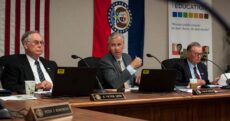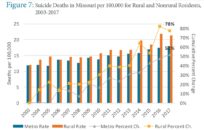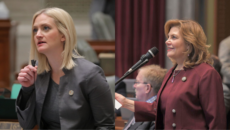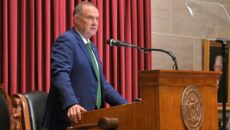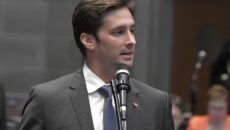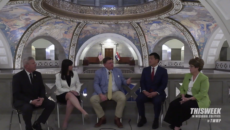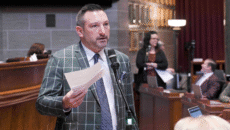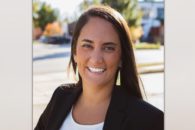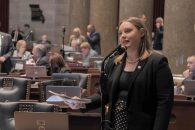But the project needs legislative approval first
Nearly $13 million in federal funds to aid students experiencing homelessness has been earmarked for Missouri, which the state’s education officials plan to use to develop software to better identify these students.
But in order for the Department of Elementary and Secondary Education (DESE) to utilize the money, dedicated through the American Rescue Plan Act (ARPA) of 2021, the Missouri Legislature needs to give approval.
In its plan submitted to the federal government, DESE said it would use its $12,822,529 to develop a software system that would help local education agencies better identify families’ homeless status.
The department “believes that additional training and a software solution are necessary to improve accurate identification of homeless families,” it said in the proposal. “Identification is the first step.”
“The identification process for homeless children and youth is complex under the legal definition of ‘homeless,’” Mallory McGowin, a DESE spokeswoman, told The Missouri Times. “DESE is interested in a software solution to support districts and homeless children and youth. This solution would streamline the identification process, increase accuracy, and potentially help connect those identified with community resources more quickly.”
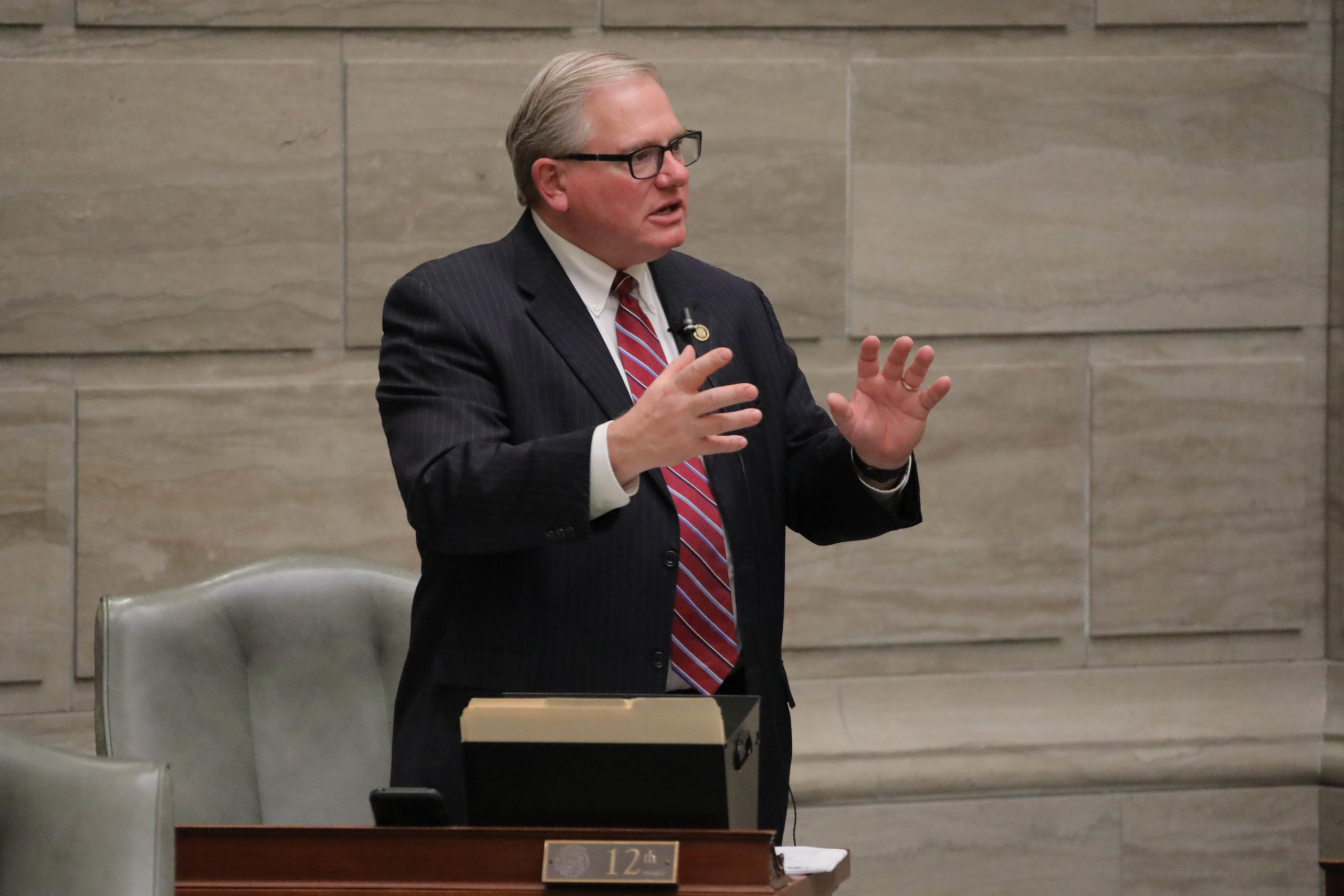
Since no work can commence on the project until the legislature approves the funding, there is not yet a cost estimate for the development of the software, McGowin added.
Additionally, the department would use the money for competitive grants for local education agencies with a high concentration of homeless students and to provide wraparound services and training across the state.
“Ensuring that educationally related supports and wraparound services such as trauma-informed care, social and emotional support, and mental health services are provided will be a critical priority, both locally and at the state level,” the DESE proposal said.
Sen. Dan Hegeman, chairman of the Senate Appropriations Committee, said the ARPA funding for homeless students was something he believed the legislature would approve during the upcoming session.
“I think the plan from DESE seems like a good place to start and meet the requirements. I look forward to visiting with them and asking them questions during the appropriations hearings to make sure we are getting the best use for the funds,” Hegeman told The Missouri Times.
Rep. Peter Merideth, the ranking minority member on the House Budget Committee, also said he believed the legislature would quickly authorize the spending of the funds. He said he’s spoken to teachers, social workers, and advocates who expressed the difficulties of simply tracking down students who are impacted by homelessness to ensure they’re attending school — especially during the past two years of the COVID-19 pandemic.
“Their problems are huge. It’s not just a lack of a house. It’s a lack of the ability to get dressed and have transportation to show up to school on a daily basis if they don’t know where they’re coming from every day,” Merideth said. “It’s having access to good, healthy meals, getting a good night’s sleep, not having massive trauma impact their education. The list goes on and on.”
A complex identification process
Growing up, Mo, now 16 “was on the go a lot” due to the nature of his mother’s job — traveling around Florida and the St. Louis area. It was difficult to find a school, and even when Mo did, he was often out of the classroom, missing weeks at a time.
Despite racking up so many absences, Mo said his school would rarely contact his mother.
“My school could have reached out to my mom more since I was missing so many days and ask, ‘Is he OK? Does he need any work sent home?’” Mo, whose last name is being withheld to protect his privacy, said in an interview.
Now in St. Louis, Mo is enrolled in a program that allows him to attend school virtually (where he feels more comfortable learning) and in a smaller-setting classroom while he catches up on credits and courses he’s missed. If he’s ever late or misses an in-person session, Mo said the instructor is quick to reach out.
The U.S. Department of Education, under the McKinney-Vento Homeless Assistance Act, defines a homeless student as an individual who lacks a fixed, regular, and adequate nighttime residence.
“When a student is highly mobile and moves around a lot, legally they are considered homeless,” said Deidra Thomas-Murray, the homeless coordinator for the Saint Louis Public Schools (SLPS) Students-In-Transition Office. “I think people assume because students have a roof over their heads, they’re not homeless, but we all know that’s not true. We have families who are threatened with their utilities being turned off, and we have families right here in St. Louis living without gas or heat, and that’s substandard housing. It’s inadequate.”
At least 20 percent of students in SLPS are homeless, Thomas-Murray said, noting that percentage only covers known homeless students.
Thomas-Murray said she works with school employees, from teachers to counselors to secretaries and more — to educate them on how to identify a student experiencing homelessness so no one falls through the cracks.
And she’s no stranger to the issue. Thomas-Murray experienced homelessness following Hurricane Katrina. She came to St. Louis where she lived in a two-bedroom apartment with about 15 other people.
Overcrowding apartments and houses are something SLPS students experience — but it’s substandard and inadequate housing, Thomas-Murray said.
The McKinney-Vento Homeless Assistance Act requires local education agencies to identify students who may be experiencing homelessness and ensure they have access to the same standards and curriculum as their peers, according to McGowin. In Missouri, school districts are required to ask questions of families, including about living arrangements, at least yearly that could identify potentially homeless students.
“Because this is a complex identification process, an automated and objective process would make identification quicker and more consistent,” McGowin said.
DESE data from 2018-2019 identified 921 students between the ages of 13-19 who were homeless in the Jefferson City school district with nearly 400 of those students between the ages of 13-15.
The department identified 9,122 students in the Kansas City 33 district and 31,291 students in the city of St. Louis.
Confluence Academies in St. Louis identified 1,294 students, and Excelsior Springs 40 near Kansas City identified 937 students.
 Loading...
Loading...
Merideth, who has served in the legislature since 2017, expressed displeasure in how long it’s taken for the General Assembly to authorize federal COVID funds.
“We’re just sitting here with this money not appropriated. Now we’re going to get there, we’re on a tight timeline to get this money out, and we’re not going to have time to dig into the deals of how we’re appropriating it,” Merideth said. “We’re just going to have to say, well, here’s authority to spend the money.”
“There are a lot of things we need the dollars for. It’s just whether or not the schools will be equipped to do it,” he continued. “I’m confident that the state is not.”

Kaitlyn Schallhorn was the editor in chief of The Missouri Times from 2020-2022. She joined the newspaper in early 2019 after working as a reporter for Fox News in New York City.
Throughout her career, Kaitlyn has covered political campaigns across the U.S., including the 2016 presidential election, and humanitarian aid efforts in Africa and the Middle East.
She is a native of Missouri who studied journalism at Winthrop University in South Carolina. She is also an alumna of the National Journalism Center in Washington, D.C.
Contact Kaitlyn at kaitlyn@themissouritimes.com.








